A report published by the Defence Committee has warned of issues facing the Royal Navy with regards to its heavyweight anti-ship missile capability.
The report states:
“For the Royal Navy to be an effective force its surface fleet must be properly equipped with a suite of offensive and defensive weapons. To date, this has included a specialist, heavyweight anti-ship missile capability, in the form of the Harpoon missile system.
When Harpoon exits service in 2023, there will be a serious capability gap, until the potential entry into service of FC/ASW programme in 2030. This gap will not be adequately filled by the smaller and more lightweight anti-ship missiles that will be available from 2020 onwards on the Navy’s Wildcat helicopters.”
The report, drafted and agreed by both Committees, marks the culmination of the first joint Inquiry between a House of Commons Committee and a Committee of a non-UK legislature.
The Inquiry, which is a new step in UK-French inter-parliamentary cooperation on defence and national security matters, has focused on one of the most ambitious products of the Lancaster House Agreement signed between the UK and French Governments in 2010 – the Future Cruise/Anti-Ship Weapon (FC/ASW) programme.
Commenting on the report, the Chairman of the Defence Committee, the Rt Hon Dr Julian Lewis MP said:
“The FC/ASW programme is an exciting opportunity to deepen the UK’s and France’s defence partnership and the ‘One Complex Weapons Initiative’, involving MBDA, that has helped to sustain key skills in both countries’ defence industrial bases.
However, for the programme to succeed, it is clear that some significant issues need to be resolved before the ‘concept phase’ concludes in 2010 and both Governments must approach these issues in a spirit of pragmatism and compromise.
If these issues can be resolved – and we are confident that they can – then this programme has the potential to strengthen considerably the cooperation between our two countries, including our role in the collective defence of Europe within NATO.
Today’s report is a testament to the strength of the UK’s defence partnership with France, irrespective of our forthcoming departure from the European Union.”



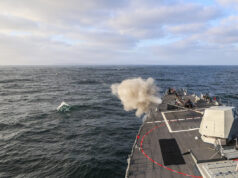
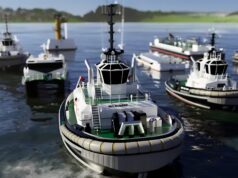
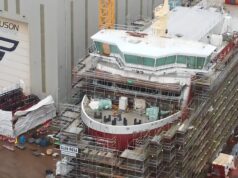
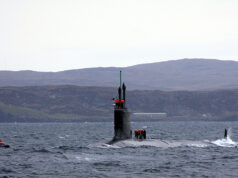
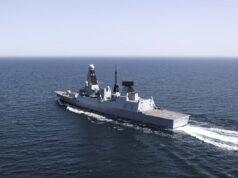

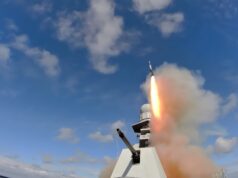
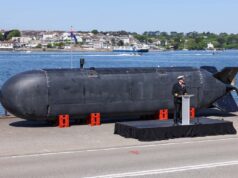
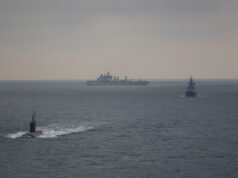
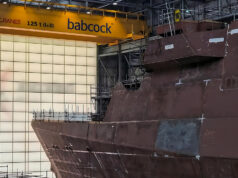

I wish we could extricate ourselves from the MOD/Government obsession/group think on multinational collaboration on weapons development with European countries.
I am quite sure we could manage to develop and procure a system without involving these tie ups.
We could quite easily develop our own weapons systems. The problem is that funding is very tight and modern weapons are extremely expensive to design and produce.
It makes total sense to collaborate with other European nations to share the costs and reap the benefits. Instead of producing a few hundred each of several similar weapons, or buying an American weapon we had no hand in designing or producing, we can mass produce modern, effective equipment that we actually benefit from economically.
Just to point out, I am unequivocally against an EU army. I am, however, a fan of anything that strengthens Europe’s defences
exocet and harpoon have now passed their sell by a long way, the powers that be have know about the need for a new system for ages, but,as usual fudged around the issue rather than sorting it out.no doubt the americans will produce the worlds best,(as they will claim) and overpriced system, which will have the rest of the world drooling and wanting it, although as it will be overpriced, many nations on a tight budget will stick with what they;ve got.
Simply you need the volumes, UK alone will never order enough to get the price low enough. It a necessary evil unfortunately.
Then how come a minor European country like Norway has designed and built their own anti ship missile? They order even less than us, and are a much more minor country than us, yet they’ve managed it perfectly alright.
We could easily do some things like this for ourselves, and should, it is a humiliation that a major European country like Britain does practically nothing for ourselves. We have to start making somethings for ourselves.
I am sick of hearing excuses on EVERY SINGLE THING on why we, Britain, a major European country with a long proud history of engineering, can’t do it ourselves. And when I say every single thing, I mean every single thing.
Tend to agree. If France, Italy, Sweden the US can develop an AShM I’m sure we could. At one time we had forst generation Sea Eagle. Have we allowed the French side of MBDA to control seeker technology? Notice how well Exocet is marketed versus Teseo Otomat, which I believe the RN looked at in the context of T45
Stephen:
Agreed. Back in the day, Sweden, with 8.5 million population at the time, used to produce virtually all of it own armaments. Switzerland, 6 million people, produced it own fighters for a while. Not the best in the world, but they worked. Then there is Israel with a wide variety of self-designed and produced weapons There is no reason a nation of 66 million plus people can’t produce its own weapons. Its just rocket science.
France has a history of screwing the U.K. on joint military developments, we should be loosening our relationship with them, NOT strengthening it.
Yes we should do joint development, but on a case-by-case basis with countries around the world, not just the stroppy neighbours next door.
One area we should be partnering is with Japan on seaborne VTOL capability. In return for assisting them getting the helicopter carriers converted to F35B operations (eg ski jump, deck heat proofing, and rolling landings) perhaps we can partner on new weapons for the F35B or VTOL drones to complement our F35Bs.
As for anti-ship missiles, why not the Marine Tomahawk? We can but as a stopgap and when no longer required for anti-ship it can be used for land strike. We might even get those extra 12 VLS tubes on the T45’s to accommodate them.
I think we need to up our game and get some modern ASM that are not bassed on old technology, are not that stealthy and are slow/subsonic.
I think the 12 slots on the T45 should be used for moe SAMs the 48 at the moment has too few. ASMs can be mounted in place of the Harpoons.
However it is hard to find a single supersonic Western ASM as the West has dropped the ball on ASMs.
Ron
The problem is that, as I think Gunbuster explained a while back, despite some urban myths to the contrary the FFBNW space for the Mk41 does not come from squeezing them into the existing silo space but is in fact right where the existing Harpoon launchers go when fitted so, unless another location could be found for the 2 x 4 deck launchers, it’s an either-or thing on the possibilities you suggest.
If the deck launchers could be relocated somewhere then your solution is ideal but if it came to an either-or then I agree more strongly with your first point. T45 is supposed to be an AAW defence asset and, especially now we have such valuable assets such as QEC to defend, it needs to be optimised for it’s core role and the current load-out doesn’t to me seem to be enough for what is often claimed to be the best AAW vessel in the world. With only 6 vessels there are unlikely to be enough in service at any given time for it to be doing much else and if T31 really can give us a boost in numbers then they should be doing general purpose stuff. The cheapest way to give T45 more AAW bank for the buck might be to put dedicated Sea Ceptor launchers into the FFBNW Mk41 space to allow the main Sylver silo to concentrate on Aster 30, potentially including the ABM variant assuming that will fit in Sylver 50 and not need Sylver 70. Put any money saved into making sure that the T31 program goes comfortably beyond just the first 5 vessels.
a useful idea was posted the other day, that a land ceptor system which can be driven to the optimum position or stowed below deck, when not required, would be a good fix for a carrier weapon system, more flexible, up to date,cheaper than a vls setup which would take ages to fit, test and deploy
Tomahawk is old but it does have huge range and a place. If the things went pear shape you’d be looking at taking out lightly armed supply ships, why engage the enemies surface combatants if you could limit their ability to operate and if you can do this from a 1000ks away then all the better.
Hang on, didn’t we screw the French re the QE class!
No David, we didn’t. It was/is a UK project the French bought into. Effectively it was two separate national projects using a common UK design (which the French bought). The French pulled out of it because a) they decided they couldn’t afford a second carrier b) there was huge resistance from the French military establishment at buying & building a UK designed carrier.
David. Blair wanted to give them a big slice of the work on our carriers in return for sweet FA on theirs. Gordon Brown had none of it.
David – in what way ?
Blair signed a defence co-operation deal with France which is still in place. As part of it France would have gotten 30% of the work on our carriers free of charge. Gordon Brown cancelled that because for him Rosyth was in his seat and at least for him the purpose of the carrier programme was to provide a long-term workload for it. It just goes to show the national and local interest can often coincide.
Not sure it was as simple as that. After buying the design from the UK, the French tried to persuade the UK government to build both Royal Navy carriers and the French one in France (they claimed they had the expertise after the build of De Gaulle) which was turned down. It was all academic anyway once the financial crisis hit: The French government decided they couldn’t afford another carrier, this suited the French military establishment as they were against the idea of using a design that a) came from the UK and b) was not nuclear powered.
https://en.wikipedia.org/wiki/French_aircraft_carrier_PA2
David. It tells you nothing about the workshare agreement ? Wikipedia is great as a first course on any subject but only that.
I was referring to the 55 million we got from the French regarding the design for which we kept when they pulled out of the contract.
hooray!!!!
I know we’ve had issues, and I wish that we could do it all ourselves, but on the basis of CAMM, Meteor, Brimstone and how SPEAR 3 seems to be evolving I have high hopes for MBDA delivering something good for the SPEAR 5 requirement which I assume this is what could fulfill this requirement. Unfortunately SPEAR 5 is a fair way off and this capability can’t be gapped so an interim solution is required.
Wish we could do it all ourselves? I wish they would let us do even 1 single thing for ourselves.
When Harpoon exits service in 2023, there will be a serious capability gap
Correct me if I am wrong, but I was of the belief we were already at that stage, all the MOD have done is stick a new best by date on the missiles, in which to be able to say to the Government. Yes we have anti-ship missiles.
They will probably do the same until 2030, its not really acceptable considering how much Radar, combat management systems and air defence missiles have improved since the Harpoon and Exocet where introduced.
Their only realistic chance of not being intercepted is through a saturation attack or the opposing crew just not making not reacting at all to the threat.
.’… need to be resolved before the ‘concept phase’ concludes in 2010..’ Hopefully it’s meant to be 2019 or 2020.
Why not the Norwegian offering that’s now being sold to USN as an interim solution or I do like the idea above of collaboration with Japan who have very real threats and real urgency for solutions across the board and have great offerings in exchange…. Spear 3 brimstone and meteor heading east with their long range ASROC and a2a seekers coming west and collaboration on new stuff.
Have worked with Japanese industry on and off for many decades and they know how to engineer and deliver the right quality first time on time.
In unrelated news:
HM Canadian Government has cleared the T26 purchase to go ahead after the decision was appealed by Alion and the Dutch frigate offering
HM Australian Government has confirmed the first of their new Barracuda SSKs will be called HMAS Attack. Now that’s one cheap and highly effective way we could increase our anti-shipping capability; fill up on dozens of cheap and silent AIP SSKs
I don’t know about dozens, Levi but I’ve been rabbiting on about six or eight AIP subs for a long time. It seems to me to be a fairly straight forward way of increasing strike and ASW capability, particularly if we are to take up a serious role in the North Atlantic.
As for the anti ship difficulty the answer surely is the naval missile from Norway…effective and inexpensive, and of all people being taken on by the U S A
LOL HM Australian Government?? How quaint.
Australia is a sovereign independent nation and has been since federation in 1901. It has a different system of government with elements of both Westminster and Washington.
The Australia Act in 1986 removed all traces of anachronistic colonial legal connections and any doubt about Australia’s independence. https://en.wikipedia.org/wiki/Australia_Act_1986
The Australian High Court subsequently found as a result of the Australia Act that Britain had become a “foreign power” within the meaning of Constitution section 44(i),
The preamble to the Australia Act states Australia is “a sovereign, independent and federal nation”. This is both formal a declaration of independence and an acknowledgement that Australia was already independent.
Think of it as Australia’s Brexit.
Actually O Z….as the Queen is the head of state in Australia as in the U K you are wrong. Both countries are constitutional monarchies.
Yes technically Australia is a constitutional monarchy but the Queen is a titular head with no power to direct or intervene in the affairs of the Australian government or its people.
Good for selling newspapers and gossip mags though.
….and so your point is what?
Last night I watched ‘Warship’ on TV. During the episode, the ship was ordered to take part in military action against Syria. As the US lead task group approached its collection point, the vessel went to ‘action stations’ and the tension was palpable amongst the crew. I for one asked myself a question, is this Type 45 fit for purpose, can it protect itself and crew? If I’d was a senior member of the MOD /Treasury, could I have been reconciled that all that could be done to equip this ship, so it can go to war and survive? In peaceful times, we debate on this site about budgets and how the RN should be equipped going into the future, however, the concern…no fear, on the faces of HMS Diamond, were real and not for the added tension of a TV programme. If not watched I recommend you do.
Sorry to be pedantic but warship is filmed on board HMS Duncan. They even say it at least 50 times an episode.
I knew it was a Type 45, at least give me that!
that ships been to action stations more in three weeks than i han i did in 12 years!! doesn’t look like they exactly rush to do it either
I agree, but I was like! What the hell us a type 45 going to do to atack Syria? Ok it can control air suport and protect them but it’s purely defence! It can’t strike with any land atack missiles! It needs that capability for that exact reason, being in the area but can’t do jack!! It should be able to do land atack!!
The 45 was there to provide area air defence of the task group. The group had been tasked with striking targets in Syria. I would say she performed her job more than adequately. Having the ops room focus entirely on AAD keeps the pencil sharpened on that task in hand instead of working out firing solutions for other options/methods.
I do agree that additional cells are required, but for me… I’d fill them with quad packed sea ceptor to free up 8 or 16 VLS for the longer ranged Aster 30 or future BMD capable options.
Yeah but when the type45 is sailing the oceans alone it would be nice if she could be equipped with more. I like the idea of the Aster block 1NT at 1500km range, and the Aster 30 block 2 BMD and has 3000km range against manouvering ballistic missiles. I’m not sure if Sylver 70 VLS is needed for that though as no doubt they will be bigger missiles or if type 45s Sylver 50 VLS is fine for that, I know the Royal Navy seemed keen on Bkock 1 and 2 aster 30, and the BMD type 45 role.
Those aren’t the range the Aster 30 can fly out to, that is just the type of ballistic missile it is capable of shooting down… Its capable of shooting down a ballistic missile which is in the class that has a range of 3000km.
Its confusing wording but basically a ballistic missile travelling 3000km will be at higher altitude and a much higher speed than one travelling 1000km. So basically the Aster will be upgraded in the future to where its capable of striking those… I’m not sure if its capable of terminal defense against those type of warheads or if its capable of mid-course defense (like if the ship is midway between the missile’s launch point and target where the ballistic target would be at its highest altitude)
Well that’s strange because both my partner and I watching that one were both markedly and independently impressed with their professionalism under clear pressure. As they said, they were there explicitly to offer air defence. The one thing I did notice was the apparent, if slight pointed remark, fueled perhaps by a sense of frustration while explaining the ships role in offering that air defence to the American vessel, one member of the crew mentioned how the US ship had cruise missiles while they did not.
The problem that I am seeing is that we seem to be spending money on developing a new supersonic Mach 3 300km range ramjet Anti Ship/Deep Strike missile Perseus from MBDA. It appears that it will be ready by 2030. This does appear to be a highly developed platform. This appears to be the missile that the report is speaking about.
So what do we do in the mean time, is it possible to lease an interim missile of a buy a smaller less capable one that could then be bolted onto the Type 31s possibly the NSM from Norway could fit the bill.
I do agree with the comments about the Type 45 and its need for more surface to air missiles. With some redesign the Type 45 could take a further 24 Mk41 or Sylver A70 launchers in the position of the current Harpoons with the Anti Ship Missiles being placed aft of the funnel or they could use 8 of the Mk41 launch tubes, leaving 16 for either Standard Missiles/ Asters or 16*4 Sea Ceptors. I would like to see this configuration with 56 Asters,8 of which would be either the Aster 30 1NT or 2BMD variants, 32 Sea Ceptors (quad packed) and 8 Perseus. There is a possibility to use the Standard RIM 174 ERAM in the extended range air interception, ballistic missile defence and as an anti ship weapon. That could fit the requirements for the decade without a dedicated Anti Ship missile whilst not wasting money on a weapon that would only be needed for ten years. However I am not sure if the RIM 174 requires a dedicated target acquisition radar. That would make the Type 45 a very capable Anti Air and carrier escort platform.
I agree with all of that but are you sure it is all possible? For instance wouldn’t relocating the deck launchers to behind the funnel put them awfully close to the Phalanxes and in danger of burning the top off the Phalanx domes with the rocket exhaust when fired?
Also, maybe a total redesign of the forward silo area could add 24 strike-length Sylver or Mk41 but at what cost? Capability-wise I don’t for a second question that your suggestion is much better but with our armed forces so stretched in almost every single area I still wonder whether adding dedicated Sea Ceptor launchers to offload some of the requirements on the existing 48 Sylver 50 might be a way to get some uplift without massive cost. The danger I see is that massive cost never gets approved so there is zero capability uplift whereas more modest cost might get approved.
If we were ever to do the big re-configuration that you are talking about then surely now would be the time to do it when T45s are coming in to have holes cut in their hulls (as I understand it) to address the power issues.
As another point on Sea Ceptor, I continue to be slightly perplexed when I see BAE Leander renders with a 2 x 6 “mushroom farm” silo behind the main gun for a grand total of 12 missiles carried. I really hope that is simply lazy rendering by reusing inaccurate graphical elements from elsewhere because, with things like the dedicated LM ExLS 3-cell unit using quad packing to get 12 Sea Ceptor into what I think is a much smaller deck area we really seem to be failing to capitalise on one of the benefits of SC soft launch in terms of no exhaust venting needed and also fairly modest diameter of the missile presumably leading to potentially higher packing densities. I understand why in the interests of cost and expediency the T23 fits are doing 1-for-1 swaps for Sea Wolf but SC doesn’t need exhaust venting so surely a dedicated SC silo could be packed more densely than we are seeing on Leander renders?
I don’t know why we are not using the LM ExLS 3-cell units either, even on the T26 we seem to be using these 6 cell launchers that space the missile out wasting room. Maybe it allows for more shielding and protection around each missile so it safer. I’m sure money has nothing to do with it 😉
Julian, I understand and agree with you that sometimes if not nearly always a big refit will not always get through the bean counters. However, at the moment the Type 45 is designed for but not equipped with I think 12 Mk41 launchers between the 4.5 and VLS. Yet going from memory the original design was for 24 MK41s between the superstructure and the missile launchers. She has the beam to take this. I do agree with your comment about mounting the SSMs aft of the funnel, this would mean that the CIWS would have to be moved forward. This though would give the possibility of either increasing the Anti Air missile fit by having the SSMs on launch ramps or including ASROC into the launch silos.
Even if the MoD would install the 12 Mk41 tubes it would give a Anti Air possibility of 60 Asters or 48 Aster 30s and 48 Sea Ceptors. That would be a combination to give any air strike attack a bad day at the office. Only on the condition that the new SSM hopefully Perseus as I like the look of its capabilities could be launched in the same way as the Harpoon.
Isn’t th space for more missile silos in front of thsylvr 50 VLS not behind? So the harpoons wouldn’t need to move.
Ron – its interesting that the French have fitted their Horizon class with Sadral Mounts on top of the Hangar as a CIWS,would be a cheaper counter to Drones and Helicopters rather than firing an Aster I would have thought.
It’s difficult to believe that there is nothing being purchased to fill the so called 10 year capability gap. I know that Australia, USA and Norway will be purchasing the Joint Strike Missile which is a development of Kongsberg’s Naval Strike Missile. The JSM has been redesigned so that it can fit in the internal bays of the F35. By doing so also allows it to fit in a Mk41 VLS. The JSM is a multi-purpose strike missile that can not only attack ships but also land targets. It may not be hypersonic but uses a combination of high subsonic speed, terrain following and stealth to maximise its chances to get to the target.
I am pretty certain that we will also buy JSM for our F35s as SPEAR 5 is long way off (IOT 2030). Paveway and Brimestone could be used against warships, but places the launching aircraft too close to the target. The aircraft or another asset would have to continually lase a manoeuvring ship to guarantee a hit with Paveway and I’m not sure if Brimestone could do enough damage to cripple let alone sink a warship. The Brimestone replacement Spear 3 would need to do a large swam attack to do significant damage to a warship. So that leaves us where?
The JSM is the only obvious off the shelf solution, not only can it be used by F35s but also by ships as either a containerised or vertical launch option. Norway are even looking at a sub-launched version. It is a multipurpose weapon that can target both ships and land targets, so reduces the logistic burden of requiring two types of missile for two jobs. It may not have the range or explosive content of Tomahawk, but it still a very useful weapon that could offer significantly more potential then Harpoon currently does.
Unfortunately, JSM only fits F-35 A and C models, the internal weapons bay is too small on the -B model. Hopefully, they work out a way of cutting it down to size because, like you, I think it would be a great weapon to arm both our aircraft and ships with. I believe it’s even being cleared for the P-8 (although maybe not in RAF service…).
I honestly don’t know this but would JSM be able to be carried under the wings of an F35b?
It’d lose its stealth in doing so but if it has a 100+ mile range then it could launch at a standoff distance before entering enemy defensive missile range. I’m not that much in the know about missiles but Russian ship based S300s wouldn’t have the range to target an F35 carrying the JSM. Tell me if I’m completely wrong here.
My memory maybe deceiving me but I thought I read a while back that it could be carried under the F35b wings.
That could be one option then to at least get an airborne anti ship missile. Our fighter pilots generally train to fly at low altitudes to go below radars so they could do that with F35; fly low until they get in range of the target ship.
Absolutely no reason why this couldn’t be provided under UOR in the interim. The Army got significant equipment investment under UOR from the Treasury during Telic and Herrick. This isn’t any different.
Treasury would probably say it’s not urgent as we’re not at war.
Our treasury is clinically thick. By that argument we can just make the entire UK “Fitted for, but not with” any defences & save a fortune until somebody just rolls in & takes us over.
We need the basic tools of modern naval warfare & to give those we employ to put their lives in harms way a decent chance of doing the job without needless slaughter.
You and I and everyone else here knows that but the f*cktards in the treasury largely do not.
Something like spear 3 may be good, after all you can have more of them and use them against multiple threats. You don’t need to blow big hole in a ship for a mission kill, would lots of small clever bangs be better than a couple of stupid but very large ones?
Probably best to ask the Navy what it actually thinks would be the thing it’s actually likely to need to fire in anger ( has it ever shot a heavy weight Anti ship missile in anger ?) as appossed to what we had last time, what convention says is a good idea, what a load of politicians, media or the public would like or whats really cheap.
Ah, I thought that with the modification from NSM to JSM they allocated for the F35B’s bay differences. Guess not.
I’ve posted this previously but I really believe the LRASM is the answer to the problem since it’s being modded by the USN to fire from both surface ships and submarines. It’s in service, has good range, it’s stealthy, and while it’s too big for the F35B bay, it will fit any warship in the RN inventory with the VLS or tubes to launch it.
https://www.forbes.com/sites/lorenthompson/2018/12/03/lockheed-martin-stealthy-anti-ship-missile-fills-gap-in-u-s-navys-china-strategy/#4ec9df5551e0
Cheers!
LRASM is only available in air launch versions the USN has shown no interest in a ship or submarine launch variant so don’t expect the RN to stump up the cost for it.
The USM has gone for NSM for ship and is working on a supersonic sub launch ASM with a great deal of secrecy.They have also been looking at bringing subharpoon back into service.
Hi GWM,
you may want to read the article again. The USN is modding the LRASM to fire from ALL of it’s surface warships and submarines with the exception of the LCS which will fire the NSM. It’s currently carried by the USAF’s B1 and will be carried by the F18 starting this year. By 2023 it should be in the VLS of all USN combatants except LCS which fields NSM next year.
Cheers!
It’s is not reporting the USN has a programme of record to deploy LRSAM from ship or sub and there is not one.They are going to upgrade Tomahawk with a multimode seeker, bring back Subharpoon which they have stockpiles and are developing a supersonic sub launched ASM called Dragon strike,see waroom article about it.NSM will go on LCS and their new Frigate.
The US navy apparently has a sub launched anti ship missile nearing service:
https://www.popularmechanics.com/military/weapons/a21248858/navy-sea-dragon-chinese-hackers/
Also I think the Type 45s should be fitted with Mark 41 cells and SM-6 missiles purchased. That would instantly give those ships a mach 3.5+ nearly 200 mile range anti ship missile and could be used for air defense if needed. The warheads are small but they used the SM-2 to take out Iranian ships during Operation preying mantis. With the advanced targeting they have and the fragmenting warhead they could easily disable just about any ship out there. All you need to do is a blind a ship and you can come in with F-35s and sink it with LGBs.
GWM,
very true but I think you underestimate the truly bad situation the USN is in ASM wise (totally outgunned and outranged) and how little really needs to be done to modify MK41 VLS to fire the missiles. Since this program will need far fewer funds outside of modding VLS and procuring block 2 missiles you need only read between the lines. The work is mostly done.
https://news.usni.org/2016/07/20/lrasm-scores-ship-launch-test
The Sub Harpoon is just the interregnum solution until Sea Dragon is fielded (it may not be since the Chinese hack of the contractor that stole EVERYTHING about the missile as well as the acoustics library used by USN subs). The Sea Dragon is basically a canistered SM which is being modified to fire from a torpedo tube in its AS role. It’s not a heavyweight missile that can takeout a large combatant – think PLAN Type 52 and larger.
I stand by my prediction that the LRASM Block 2 will be developed, funded, and fielded in the fleet by 2023. See link below.
Cheers!
https://www.defenseindustrydaily.com/lrasm-missiles-reaching-for-a-long-reach-punch-06752/
Well they will have in that case Harpoon on Ticko’s,and earlier AB’s,SM6 on all giving supersonic above Mk3 anti ship,Tomahawk block4 multimode with passive/active RF seeker for long range antiship as well as deep strike,they will also have to fill their cells with SM2,SM3 for antiair/ABM so just can’t see how or why they want LRASM.
The block 2 LRASM may very well be the the basis of the submarine supersonic ASM who knows.
Time will tell!
Cheers!
Harpoon will not go in a Mk 41.
. RN vessels with VL systems have only part of the tubes in the hull. The top portion almost always is above the main deck with a structure built up on 1 deck around the launcher area . This is the case on T23 and T45.
If you want a longer VL tube it goes in the existing space and you build the structure to cover the top portion from 1 deck upwards. This would happen for a Mk41 fit.
It gives you more flexibility if longer tubes come into future use and it also keeps less BANG! inside the main hull structure . It also offers additional protection for the silos from weather , damage and external attack.
Here we go again. The old capability gap. Which means sending our men and women out there in harms way with inadequate means of defence. ALL navy vessels, frigates destroyers, must have effective anti surface, subsurface and air capabilities. It really isnt rocket science you know. Just plain bloddy common sense.
And yes UK, produce your own missile system. The less we have to cooperate with the French, the better. Allies? No thanks.
Yes the UK should go it alone for anti ship missile fit. The joint work with the French will come to nothing as they will steal the technology and walk away. The RN and RAF need a heavy weight ASM asap. I would just go ahead and order the NSM. It can be fitted into.mk41 strike cells, air launched by Poseidon and can be cannister mounted on vessels as small as 400 tons.
Cost £1 million each. Thus around 400-500 million would close the dreadful capability gap. Not a huge sum of money for a country with 66 million people. The talk of the NSM being an interim measure until Perseus comes into service. This would be an interim measure of at least 12 years then. That is not a small period of time.
Do we seriously think a 12 year capability gap, during which the Royal Navy and RAF will struggle to target and sink a hostile vessel is a good solution.
Come on HMG spreadsheet Phill et Al put your hands in your pockets and get this issue sorted.
About blooming time!
HMG are you listening?
Is there any reason we can’t fit the French MdCN anti-ship missile to the Astutes? It can be fired from 21-inch (533 mm) torpedo tubes. The MdCN range is over 1,000km.
Replace the A-50 Sylver cells on the Type 45s with A-70 Sylver cells and the Type 45s could have Aster 15 and Aster 30 as well as the MdCN anti-ship missile.
I’d assume that A-70 Sylver cells would also enable Aster 30 Block 1NT to be fitted? And that CAMM could be quad-packed in A-70 cells, the same as is possible with A-50 cells?
Seems like a win-win-win-win to me or am I missing something?
Lastly, make SPEAR 3s fired from F-35Bs stealthy and able to accelerate in their terminal phase, which would make them more likely to hit their target. And especially if fired alongside SPEAR-EW. They may not be that powerful as missiles go, but laser targeting and millimetric wave radar should allow for precision hits to mission-kill even the largest of ships by targeting bridges, radomes, EO/IR sensors, CIWSes and in the case of carriers any aircraft on the deck.